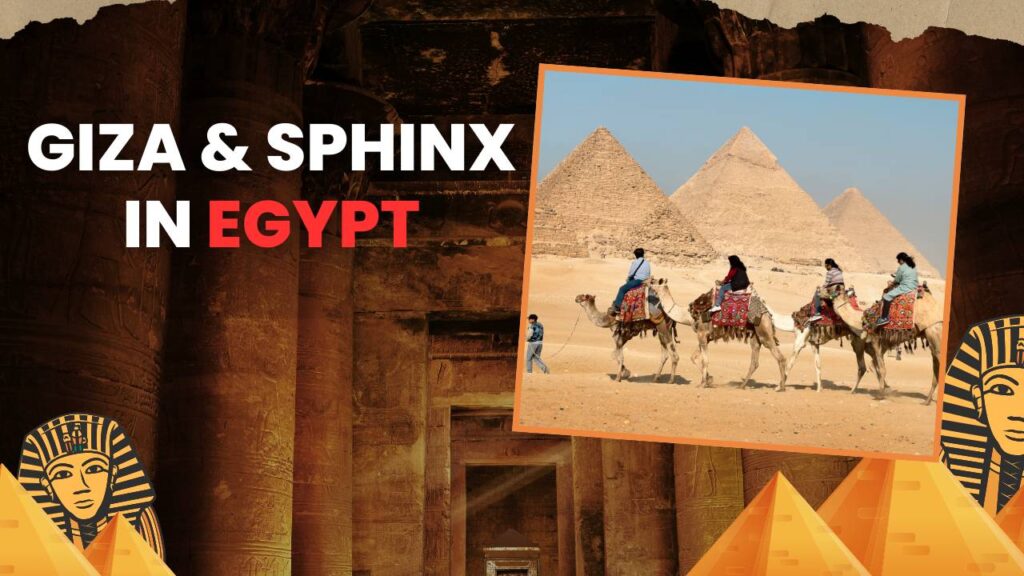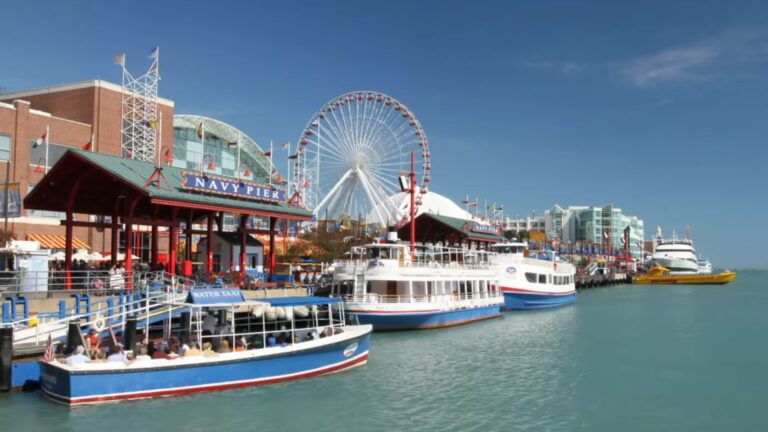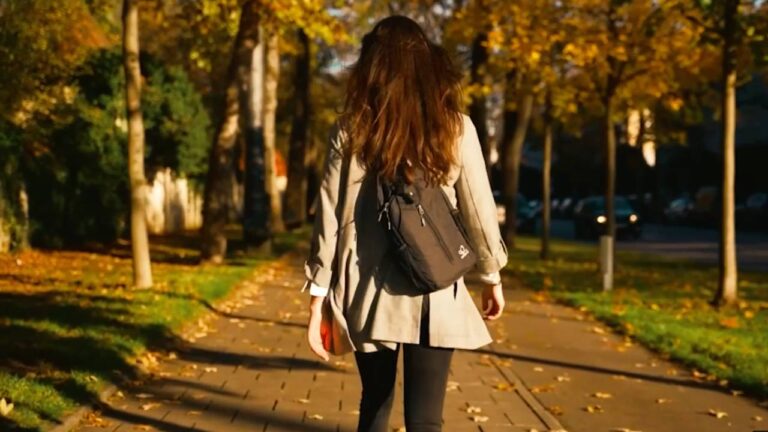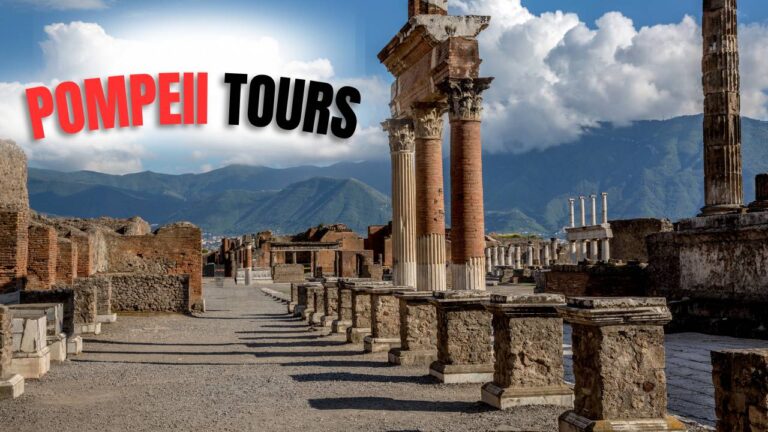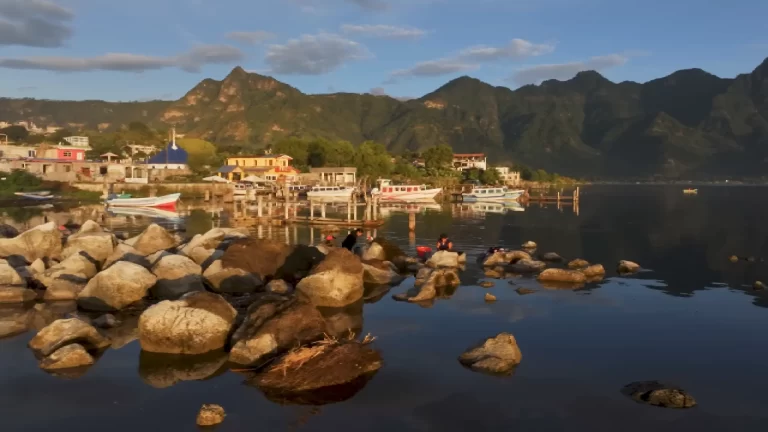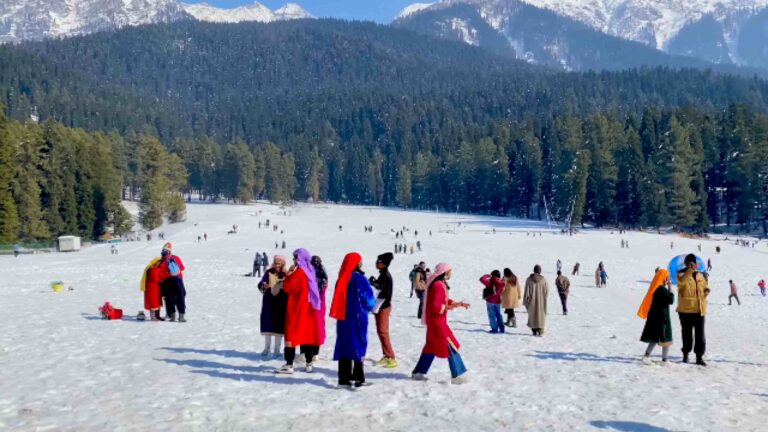Pick the ancient wonders of Egypt with our complete guide to the Giza Pyramids and the Great Sphinx. Get all the essential tips on history, travel, tickets, and top things to do.
Giza and Sphinx in Egypt stand as timeless symbols of ancient civilization, captivating travelers from around the world with their grandeur and mystery. Located just outside Cairo, the Giza Plateau is home to the majestic pyramids and the enigmatic Great Sphinx, drawing millions each year to witness these legendary landmarks. This complete tourist guide offers everything you need to know the iconic Giza and Sphinx, from historical insights to travel tips, ticket details, and the best experiences to enjoy during your visit.
History of the Great Sphinx of Giza
The Great Sphinx of Giza is a colossal limestone statue believed to have been constructed around 2500 BC, during the reign of Pharaoh Khafre. Carved directly into the bedrock of the Giza Plateau, the Sphinx stands 73 meters (240 feet) long and 20 meters (66 feet) high, making it the world’s largest monolithic statue.
The Sphinx features the body of a lion and the head of a man—most likely representing Khafre himself—symbolizing strength and wisdom. Though its exact origins and purpose remain a topic of scholarly debate, it is widely believed that the Sphinx was built as a guardian figure for Khafre’s pyramid complex. Over time, erosion, desert sand, and political neglect led to various stages of damage and restoration.
Bologna: How to Reach, What to See & Things to Do Nearby
There are also many legends surrounding the Giza and Sphinx, including the mysterious “Dream Stela” placed between the statue’s paws by Thutmose IV, who claimed to have seen the Sphinx in a vision. To this day, researchers continue to debate whether the Sphinx predates even Khafre, possibly making it thousands of years older than mainstream Egyptology suggests.
How To Get To The Giza Pyramids
Reaching the Giza and Sphinx site is relatively easy due to its proximity to Cairo. The site is approximately 13 kilometers (8 miles) southwest of central Cairo, making it a perfect half-day or full-day trip for tourists staying in the capital. Whether you’re an independent traveler or part of an organized group, getting there is straightforward with multiple transportation options available.
Transportation options include:
Taxi or Ride-Sharing (Uber/Careem):
This is the most convenient way to reach Giza, especially for those new to Cairo. A one-way trip from downtown Cairo typically costs around $5–$10 USD, depending on traffic. Most drivers are familiar with the route to the pyramids, and apps like Uber allow you to avoid language barriers and negotiate-free fares. For added comfort, choose a car with air-conditioning, especially during the summer months.
Metro + Bus:
Take Cairo Metro Line 2 to Giza Station, then board a local minibus or taxi heading toward the pyramids. While this is a cheaper option, usually costing less than $2 in total, it may be confusing for first-time visitors due to limited English signage and crowded buses. Be sure to ask locals or staff for directions if unsure.
Private Tour Services:
Many local travel companies offer half- or full-day packages that include hotel pickup, entry fees, and a guided tour of the Giza and Sphinx complex. These tours often provide historical context, access to lesser-known spots, and stress-free planning. Some packages even include optional extras like camel rides, quad biking, or visits to nearby attractions like Saqqara.
Group Tours & Day Trips:
These are popular among international tourists and often include additional stops at major sites like the Egyptian Museum, Khan el-Khalili market, or even Memphis and Dahshur. Group tours offer a social experience and are usually cost-effective, with professional guides leading the way.
When Is The Best Time To Visit The Giza Pyramids?
Best time to visit the Giza and Sphinx site is between October and April, when temperatures are cooler and more suitable for outdoor exploration. During these months, daytime temperatures range between 20°C to 27°C (68°F to 81°F), offering a more comfortable sightseeing experience.
Avoid visiting in peak summer (June–August), as daytime temperatures can soar past 40°C (104°F), making it nearly unbearable for walking and climbing. Not only does the intense heat affect your energy levels, but it can also make the sand and stone pathways extremely hot and difficult to navigate.
The early morning hours (8:00 AM to 10:00 AM) are ideal, as they allow you to visit the monuments before the bulk of the tourist crowds arrive and before the sun reaches its peak. Visiting late afternoon near closing hours can provide fantastic lighting for photography and a quieter atmosphere.
If you prefer fewer crowds, try to avoid weekends and Egyptian national holidays, when both local and international tourists flock to the pyramids.
Giza Sphinx Opening Hours: What Visitors Need to Know Before They Go
The Giza Plateau, home to the majestic Pyramids of Giza and the iconic Great Sphinx, operates under set government hours managed by Egypt’s Ministry of Antiquities. While these hours are generally consistent throughout the year, it is essential for travelers to check the schedule in advance, especially during public holidays, Islamic religious festivals, or national events, when changes in accessibility and timing are common. Some areas within the complex may also close temporarily for maintenance, security, or private functions.
Standard Opening Hours (October through April)
During the cooler months—from October to April—the complex opens at 8:00 AM and closes by 5:00 PM. These months mark the peak tourist season in Egypt, thanks to the milder climate which makes outdoor exploration far more comfortable.
It’s advisable to arrive early, ideally right at opening time, to enjoy a quieter experience before the crowds and tour buses arrive. Early morning light also offers better conditions for photography, especially around the Sphinx and the eastern side of the Great Pyramid.
Summer Hours (May through September)
In the hot summer months, the complex operates under extended hours, opening as early as 7:00 AM and closing at 6:00 PM. These adjusted hours are designed to help visitors make the most of the cooler morning hours and avoid the scorching midday sun, which can be particularly intense in the desert environment.
Keep in mind that although the days are longer during summer, the heat can significantly affect your stamina and overall experience, so early visits are highly recommended.
Entry Cut-Off Time
One important detail that many travelers overlook is the last entry time, which is usually set one hour before official closing. This means that even if the complex is open until 6:00 PM, no new visitors will be admitted after 5:00 PM. If you plan to visit later in the day, be sure to arrive well before this cut-off, especially if you want ample time to walk the site, take photos, or enter any of the pyramid chambers, which often have separate entry tickets.
Giza Sphinx Ticket Prices
Visiting the Giza Pyramids and Sphinx complex is not only a journey through history but also a surprisingly affordable adventure for most international tourists. Ticket prices vary depending on what you wish to see and whether you’re opting for general admission or venturing inside the ancient pyramid chambers themselves. Here’s a detailed breakdown of the 2025 pricing and helpful tips to make your visit smoother.
Entry Fees: Giza Plateau (Pyramids + Sphinx)
- Foreign Adults: EGP 540 (approximately $17 USD)
- Students with Valid International ID: EGP 270 (approximately $9 USD)
- Egyptian Nationals: Local rates apply and are significantly lower
- Children under 6: Free entry
This general admission ticket grants you access to the entire Giza Plateau, including close-up views of the Great Pyramid (Khufu), the Sphinx, and the other main pyramids (Khafre and Menkaure), though interior access to the pyramids requires an additional ticket.
Interior Access Tickets (Optional Add-Ons)
If you want to the interior chambers of the pyramids, separate tickets must be purchased in addition to the general entry fee:
Khufu’s Pyramid (Great Pyramid):
- Entry Fee: EGP 600 (approx. $19 USD)
- This is the largest and most famous of the three pyramids and the only remaining Wonder of the Ancient World. The interior experience includes narrow passages, steep inclines, and the mysterious Grand Gallery.
Khafre & Menkaure Pyramids:
Note: Entry to the pyramid interiors is not recommended for those with claustrophobia or mobility issues, as spaces are tight and unventilated.
Sound & Light Show Tickets
- Prices start at EGP 300 (approximately $10 USD), with premium seats priced higher based on location and language preference.
- The Sound and Light Show is held on select evenings and provides a theatrical retelling of Egyptian history, using laser projections, voice narration, and background music, all against the spectacular backdrop of the Sphinx and pyramids.
Tickets can be purchased at the gate or online in advance. It’s best to check show schedules and language availability beforehand, as each performance is presented in a specific language per show.
Things to Do in the Giza Sphinx and Pyramid Complex
Heading to the Giza Plateau, you’re not just ticking off a bucket-list photo op—you’re stepping into an open-air museum filled with history, architecture, mystery, and local culture. The site offers a wide range of things to do beyond just standing in awe at the Sphinx. Let’s visit each experience in detail so you can make the most of your visit.
1. Walk Up to the Great Sphinx and Study Its Details
As you approach the Great Sphinx, you’ll immediately feel the energy of ancient times. This massive monument—measuring about 240 feet long and 66 feet tall—stuns every visitor. You’ll notice its lion body, human head, and the sense of mystery it carries. Scholars believe the Sphinx represents Pharaoh Khafre, guarding the Giza Plateau for over 4,500 years.
When you walk around its enclosure, you can view it from several angles, admire its eroded features, and examine the “Dream Stele” placed between its paws. Take your time to observe the Sphinx’s worn yet powerful expression and marvel at how ancient artisans carved it from a single block of limestone. The close-up view makes a much deeper impression than any photo ever could.
2. Enter the Pyramids and Feel the Wonder Inside
Nothing compares to standing beside the Great Pyramid of Khufu. Once the tallest man-made structure on Earth, it still commands attention. You can climb part of the base, take in its symmetrical perfection, and enter its internal chambers for an extra fee. As you make your way through narrow corridors, you’ll feel the shift from outside wonder to sacred stillness. You’ll reach the King’s Chamber—plain yet powerful—and imagine the rituals that once took place inside.
Next, visit the Pyramid of Khafre, which often appears taller due to its elevated base and surviving casing stones at the top. If you want a quieter, less-crowded experience, the smaller Pyramid of Menkaure. While there, don’t miss the surrounding satellite pyramids and nearby mortuary temples. These sites help you connect with the ancient civilization that engineered and honored such awe-inspiring monuments.
3. Step Into the Solar Boat Museum and Marvel at Khufu’s Ship
When you enter the Solar Boat Museum, you step back into ancient Egyptian engineering at its finest. Right next to the Great Pyramid, this museum houses a massive, 144-foot-long wooden boat that workers buried more than 4,000 years ago as part of Pharaoh Khufu’s burial ceremony. Experts believe the boat symbolized the pharaoh’s journey to the afterlife.
Inside the modern glass museum, you’ll walk alongside the reconstructed ship, view its intricate design, and read about how archaeologists reassembled it without using a single nail. The craftsmanship will astonish you—and so will the spiritual meaning behind the vessel. This stop offers a unique look into the ceremonial aspects of pyramid burials that many visitors overlook.
4. Ride a Camel or Horse for a Desert Adventure
When you ride a camel or horse across the Giza Plateau, you experience the desert like ancient travelers did. Local guides offer scenic rides that take you to panoramic viewpoints far from the crowds. As you ride, you’ll enjoy open desert views, spot all three pyramids in one frame, and feel the history beneath your feet—or hooves.
Make sure you negotiate the price and agree on the ride duration before you begin. Early mornings and late afternoons provide the best lighting and the coolest temperatures. This ride isn’t just transportation—it’s a time-travel experience wrapped in golden light and desert air.
5. Watch the Pyramids Come Alive at the Sound and Light Show
When night falls, the ancient world lights up in a dazzling show of color and sound. Attend the Sound and Light Show at the Giza complex to see the pyramids and Sphinx bathed in lights while narration tells the story of ancient Egypt. You’ll hear the voice of the Sphinx “speak” as lights dance across the stone faces of the pyramids, highlighting their majesty in dramatic fashion.
The performance runs about an hour, with different language options on different nights. This experience allows you to revisit the site from a fresh perspective and feel the mystery and magic that continues to surround it.
6. Browse Local Souvenir Shops and Bring History Home
When you exit the complex, you’ll find a lively stretch of souvenir shops and street vendors offering all kinds of Egyptian keepsakes. You can pick up miniature pyramids, handmade jewelry, cartouches with your name in hieroglyphs, papyrus scrolls, alabaster carvings, and more.
Take your time browsing and don’t hesitate to haggle—it’s part of the fun and tradition. Some shops offer higher-end, authentic merchandise if you’re looking for serious collectibles. Whether you want a quick token or a quality artifact, you’ll find something that lets you carry a piece of ancient Egypt home.
7. Capture Sunset Views from the Panoramic Point
Stay late and head to the back of the plateau where you’ll find the best sunset viewpoint. From this elevated desert ridge, you’ll see all three pyramids aligned against the setting sun. As golden light washes over the limestone, the structures glow in warm hues—perfect for photography or quiet reflection.
Professional photographers often camp here at golden hour to capture postcard-perfect images. Even with just your phone, you’ll get incredible shots. It’s the ideal way to end your visit—watching the day fade while standing among the last wonders of the ancient world.
Sibiu: How to Reach, Best time to visit & Top Attractions
By planning ahead, choosing the right time, and knowing what to expect, you’ll ensure a memorable and enriching journey through one of the world’s most iconic ancient wonders.
FAQs
1. Where are the Giza Pyramids and Sphinx located?
The Giza Pyramids and the Great Sphinx are located on the Giza Plateau, about 13 kilometers southwest of central Cairo, Egypt.
2. What is the Great Sphinx of Giza?
The Great Sphinx is a massive limestone statue with the body of a lion and the head of a pharaoh, believed to represent Pharaoh Khafre. It stands guard near the Pyramids of Giza.
3. How old are the Giza Pyramids and the Sphinx?
The Pyramids were built around 2600–2500 BC during Egypt’s Fourth Dynasty. The Sphinx is believed to have been constructed during the same period.
4. What is the best time to visit the Giza and Sphinx?
The best time to visit is during the cooler months, from October to April. Mornings and late afternoons are ideal for pleasant weather and fewer crowds.
5. Are there entry fees for the Giza and Sphinx?
Yes, tickets are required. General entry starts around 200 EGP (subject to change), and there are additional fees for accessing the pyramids or guided tours.
6. What are the opening hours of the Giza and Sphinx complex?
The Giza Plateau is typically open daily from 8:00 AM to 5:00 PM (until 4:00 PM in winter), but hours may vary on holidays or for special events.
7. Can visitors go inside the pyramids?
Yes, visitors can enter certain pyramids like the Great Pyramid of Khufu for an additional fee, though access is limited and may be subject to conservation efforts.
8. How can I get to the Giza Pyramids and Sphinx from Cairo?
You can reach the site by taxi, rideshare apps, guided tours, or public transport such as buses and the Cairo Metro (to Giza station, followed by a short taxi ride).
9. Are guided tours recommended for visiting Giza and the Sphinx?
Yes, guided tours are highly recommended to fully appreciate the rich history and hidden details of the monuments, often including hotel pick-up and skip-the-line access.
10. What should I wear when visiting the Giza and Sphinx?
Wear light, breathable clothing suitable for hot weather, along with comfortable walking shoes, sunglasses, sunscreen, and a hat for sun protection.
